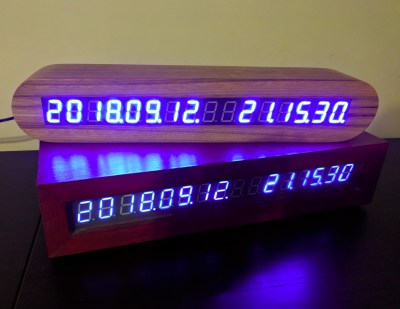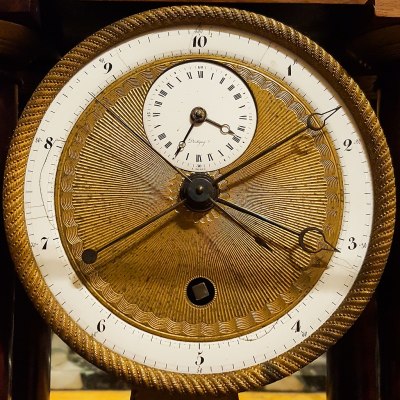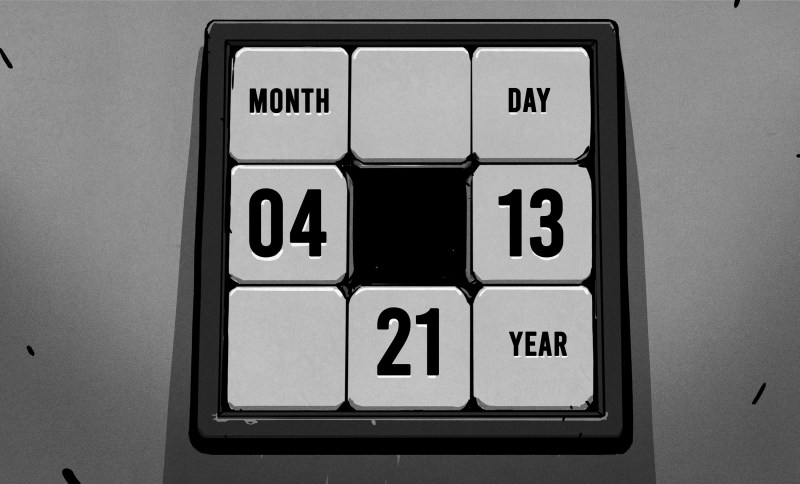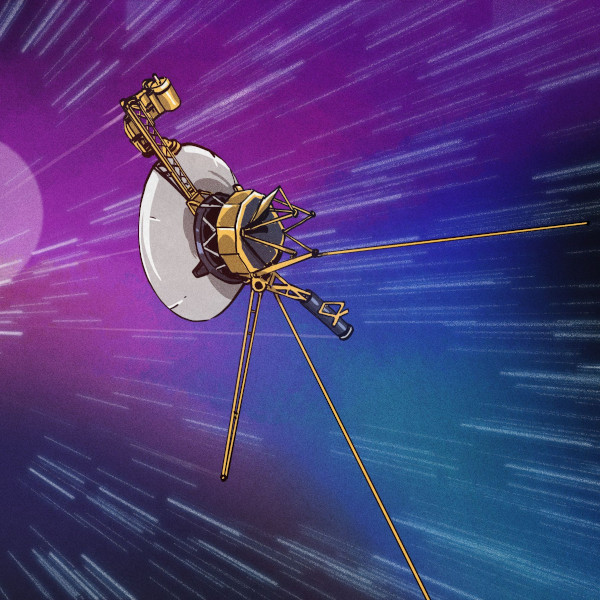There’s a document I had to sign to wrap up a community responsibility in rural Oxfordshire. At the bottom, dotted lines for signature and date. My usual illegible scrawl for a signature, and scribble in the date below it. Then there’s the moment when the lady handling the form scans it with a puzzled face for a minute, before accepting it with a smile. She’s just been ISO’d!

Where I come from in England, it’s the norm to represent dates in ascending order: day, month, year. Thus the 4th of March 2021 becomes 04/03/2021 when written down on a form. This is entirely logical, and makes complete sense given the way a date is said aloud in English and other languages.
Meanwhile in America it’s the norm to represent dates in a different manner: month, day, year. Thus March 4th, 2021 becomes 03/04/2021 when written down on a form. This is also entirely logical, and makes complete sense given the way dates are pronounced in American English.
As someone whose job entails crossing the Atlantic in linguistic terms, I am frequently confused and caught out by this amusing quirk of being divided by a common language. Is 03/04/2021 the 3rd of April or March 4th? “Why can’t Americans use a logical date format!” I cry as in a distant transatlantic echo I hear my friends over there bemoaning our annoying European ways. It’s doubtful that this divergence has caused any satellites to crash, but it sure can be annoying.
Confusing Everyone For Over Three Decades
So I took a stand. A couple of decades ago I adopted ISO 8601 in writing dates, an international standard that’s been with us for well over three decades. It too is an entirely logical way to express time, but unlike the two mentioned earlier it’s not tied to any linguistic quirks. Instead it starts with the largest unit and expresses a date or time in descending order, and extends beyond dates into time. Thus the date on my form that caused the puzzlement was 2021-03-04. I’m guessing that here at Hackaday I’m preaching to the choir as I certainly won’t be the only one here using ISO 8601 in my daily life, but while we’re talking about alternative date formats within our community it’s an opportunity to take stock of the situation.

UNIX time is probably the most instantly recognisable of all our measurement schemes, being a count of seconds elapsed since the Unix epoch of 1970-01-01T00:00:00+00:00 UTC. Coincidentally this is also an auspicious date for many readers, as it’s our birthday. If I’d written the 4th of March on that form as 1614816000 though I would have been met with complete incomprehension, so aside from the occasional moment of coming together to observe a rollover it’s not something we use outside coding.
But it does lead neatly to another question: since UNIX time is most often expressed in text as a base-10 number, why on earth does our clock time work in base 60 for seconds, base 12 or 24 for hours, and then base 12 for months? Why don’t we use a base 10 metric time system?
It makes sense for our annual calendar and the length of our day to be derived from Earth’s orbit, as we use dates as a measure of season and times as a measure of the daily progress rather than simply elapsed periods. We owe our twelve-hour days and nights to the ancient Greeks and our 60 seconds and minutes to the ancient Babylonians, while our twelve months come from the ancient Romans. It’s clear that a 365.24-day year with four seasons doesn’t divide neatly into ten months, so we’re at the mercy of our own set of celestial bodies when talking about dates. But surely we could move on from ancient Greece and Babylon when it comes to the time of day?
Liberté, Égalité, Ponctualité!

Probably the most famous attempt at a decimal calendar came in the aftermath of the French Revolution; the French Republican calendar perhaps wisely stuck with twelve months but made each of them of three 10-day weeks, and then split the day by 10 hours, with each further subdivision being by base 10. The months each had 30 days, with the remaining 5 days (or 6 in leap years) being public holidays.
It came to an official end when the revolutionary government that had introduced it was replaced by that of Napoleon. Unlike other French Republican measurements such as the meter, it evidently didn’t provide enough advantage for its popularity to outlive its political origins.
There’s an interesting parallel in the decimalisation of British currency in 1971. Previously, a pound was 20 shillings, each of which were 12 pence. Afterwards, a pound became 100 new pence, and that’s stuck. Despite some people’s lingering nostalgia for the old system, the utility of decimialisation was self-evident.
The moral of the French time-decimalization story was that people simply use a calendar and time system to tell the date and time. When you need to do frequent arithmetic, as is the case with currency, distance, or weights, this is made significantly easier through decimals. But when nature hands you four seasons, you’re pressed into twelve months. Perhaps when we slip the bonds of Earth, we’ll use decimal Stardates, but in the mean-time, ISO might just be the way to go.
Header: Rama, CC BY-SA 2.0 FR.

















Do anybody really know what time it is?
it’s aways too late !
Does anybody really care?
Does anybody really care? (About time,,,)
If so I can’t imagine why
By the time it is answered, it was the past.
We all have time enough to cry…..
Tool Time!
Binford’s Tools is proud to present…
We don’t have time to talk about time. There is just not enough time!
Dinner time! RAAAAAAR
Time is an illusion. Lunch Time doubly so.
Yes, it’s 8 O’clock. I’ve got it written on a bit of paper
https://www.youtube.com/watch?v=p2yZeQiqPkc
Ying tong yiddle I po, another Goon Show aficionado!
+1
It’s 25,
or 6 to 4!
But 6 to 4! is 18?
Hammer time!
A man of culture.
Yeah, it’s 30:10. You know, half past ten.
When my wife said it was “a quarter of six”, I asked which quarter? The first, second, third, or fourth?
It turns out she meant the fourth quarter of five!
“Quarter of…” = 15 minutes before the hour mentioned.
“Quarter after…” = “Quarter past…” = 15 minutes after the hour mention.
“Half past…” = 30 minutes after the hour mentioned.
Very simple.
I suspect that you area a native English speaker. Many languages (including major European ones) use “half to” not “half past”. It isn’t at all obvious, especially if you start using different prepositions. Prepositions don’t even always remain constant between local dialects. (“While” means “during” in general, but can mean “until” in Northern English English[1])
[1] “Do not cross while red man shows” is often seen as a plot against northerners.
More like an OLD (*sigh*) native English speaker that grew up with analog clocks (with the digital clocks these days, many folks don’t understand the “quarter of”, “half past”, etc.)
Not me. My diamond watch stopped cold dead.
“NOW. You’re looking at now, sir. Everything that happens now is happening now.”
When will then be now?
Soon!
just about everywhere i can, i like to use 2021/04/21 for the date, in the iso order. but when i am writing something down for others, i avoid ambiguity by writing the month as letters. Apr 21, 2021.
Same here. Almost every file I save and folder I make starts with 2021_04_21 so it is super easy to sort by creation date in just about every file browser. But John Q Public isn’t a super nerd, so then I go with Apr 21, 2021, like you, to remove ambiguity.
I used to write that date as 20210304 as I figured it is the easiest to decode with a computer program (just subtract or add).
But I moved to the “true” ISO form about a year or so ago…
But there are still gov’t forms that have it as mm/dd/yyyy
While “April 21, 2021” is in theory ambiguous, I personally find it confusing. When people speak out the date aloud, I get lost in the date. – “21 April 2021” works fine, “2021 April 21” works fine too, since everything is in order. I can take it in any linear order. But when you say month-day, I expect an hour after that, but when you give me a year, everything previously does not belong to the year. So my brain drops the whole date and all I have is the year. – Reading the date isn’t easy either, since “21, 2021” is confusing to me, and looks like a large number like “212021” or just twenty-one with 4 decimal places. To me, a comma does not belong in a date. – (Also using month abbreviations, unless it’s clearly in English, that can also be ambiguous; “mar” is Finnish for November)
yep, either yy mm dd or dd mm yy makes sense – what the americans do is just silly.
If people ask me the date, I say something like “22nd”, We;re normally smart enough to remember the month.
When a sibling asked our father when were we going on vacation (holiday -Jenny).
He replied “The First”.
We were excited, until he continued…
“…chance we get.”
My only other difference is using hyphens or nothing instead of slashes. I suppose it helps differentiate it on paper,
but the main reason is for filenames, since msb to lsb nicely sorts in the proper temporal order, and slashes tend to be reserved characters.
I’d separate the time and date parts with an underscore instead, although that is my default replacement ‘space’ character anyway.
To me slashes say US order, dashes ISO, dots European
just to throw a wrench in thatin Hungary we write the dates in Big Endian (like the ISO) but with dots. :D
In Italy they use slashes and the European order
In Croatia, we use dots, but we put one after the year as well, so it’s d.m.yyyy. or d. m. yyyy.
Which reminds me;
the use of . and , as separators in numbers.
I didn’t even know this format had a standard and name :-)
It has and is ISO-8601. And as it is a ISO standard, it is automatically standard in most other countries too.
You can read up on it here.
https://www.iso.org/iso-8601-date-and-time-format.html
I am not sure that 4 seasons has to mean 12 months. In the UK, for example, we could have 4 months for autumn, 2 months for winter, 3 months for spring and 1 month for summer.
You have summer? Would have never guessed
Yes. It now happens in March. Just before the April snow storms.
We had a few snowflakes this morning in SE Minnesota
A couple of weeks ago it was snowing and bright sunshine at the same time (also hailing). Other countries have climate, the UK has weather ;)
In Maine, they just spray-paint the snow green every July.
Minnesota has four seasons,
Almost Winter
Winter
Still Winter
Road Construction
In Canada we only have 2 and 4.
:-) Here in Africa Winter was on a Thursday this year.
[Hirudinea]
I’ve driven on Canadian roads, I can believe it!
B^)
Florida: Early summer, summer, late summer and next summer.
It’s rather that the 12 months comes from the lunar cycle.
Except that there are (almost exactly) 13 lunar months in a year.
That depends on whether your month is half empty or half full.
I am sure, somebody wanted to avoid then”13″. And as a prime number no useful divisions are possible
Maybe it comes from the 10 Roman months after Julius and Augustus were added?
The Romans had 10 months IIRC. Which is why September, October, November, December are seven. eight, nine, ten. Didn’t they wedge in some new months to honor Julius Caesar (July) and Augustus? Trust a Senate to fix what ain’t broken.
And a day was taken from February to make those months “big”.
This is true but it wasn’t the senate’s fault. Rome wasn’t a republic any more by the time Julius and Augustus were in power so the senate was just rubber stamping their vanity
Like one guy from Chicago said, you have two seasons here: winter and August.
One great thing about the ISO format is that a bog-standard character sort will sort dates correctly. There is no need for any special date sorting logic.
Oh sure… as long as your don’t have dates before 1000 A.D. or after 9999 A.D.! Don’t even get me started with B.C. dates! But yeah, if you are only keeping track of the blip of time between 1000 and 9999 A.D., it’s all gravy! >:( /s
In theory, dates before 1000 (down to 0) and after 9999 works in systems that sorts larger numbers after smaller numbers, like Windows. The dates aren’t valid in the ISO standard unless you put a + sign before dates beyond 9999, but still works in theory.
“(down to 0)’I believe there is no “0” year – 1 AD to 1 BC
Yes, there are no year 0. That is why 2000 is last year of the 19:th century, and why the 20:th millenia started at year 2001.
So most of those celebrations was of by one year.
Stick with four digits for pre-1000? 0001 to 0999?
In year 10000 and beyond, I’d envisage they’d do something similar for prior years.
However, I don’t think we need to worry too much about that right now, in 02021. :)
But that will be solved when they solve the Y10K problem.
B^)
Start adding leading 0’s. 0999 comes before 1000.
The Long Now Foundation (who are building the 10,000 year clock), insist on using a five figure year with a leading zero (eg we’re now in year 02021) in attempt to foster long-term thinking.
“The Long Now Foundation uses five-digit dates, the extra zero is to solve the deca-millennium bug which will come into effect in about 8,000 years.”
https://longnow.org/about/
We’ll all be dead long before then (unfortunately, the “we” may include all future generations if we succeed in killing the planet.)
Indeed, putting most significant digits (which change the least often) farthest to the left is the sensible way to write any kind of numeric value or group of values… IMO. But if hindsight is 20/20, foresight is often 20i/0
Obligatory XKCD comment on standards, applies here too!
One mistake metric calendar advocates always make with their 10 day work week: They cut the number of available weekends. A 5 day week might have had better success.
Another issue they had, (admittedly less of one now) was that all of the pack animals refused to work the ten day week. Pepsi even had this issue when trying to shot their swimming elephant commercial on a weekend.
You mean this one: https://xkcd.com/1179/ ?
Love the hower comment. “ISO 8601 was published on 06/05/88 and most recently amended on 12/01/04” :-)
Personally I think we should move to stardate’s, stardate 98903.9 :)
That’s useless as well, stardate 0 is Earth Date(24hr) May 2, 1922 14:01
So what was the stardate when Vesuvius erupted?
Actually, stardate-like time based on UNIX epoch would be make a lot of sense.
For instance, rigth now it is 1619022591, or 16190.2.25.91, which is date 16190, time 2.25.91 (or 16190.2 if you like ;-)
With this scheme you get 10-hour days, each 100 minutes, each 100 seconds. The only problem is that Epoch days do not align exactly with Earth days (they are 27 hour days), but once you’re in space, who cares about the Earth rotation period? And I would like to have those extra 3 hours…
Circadian rhythm (measured underground) tend to be in the 24-26h period.
Ugh. The weekend argument.
How about a metric calendar with not 2 but 3 days off each decimal week.
That means slightly less time spent working but shouldn’t we have standard work hours shrinking as automation reduces the necessary amount of labor? With that in mind we are overdue anyway.
Other week lengths have been tried a few times – France and Russia are the two which come to mind. Productivity drops.
You say the machines do less work?
Strange…
I once came up with a calendar of 10 months of 6 weeks of 6 days with a leap day ever other month (and an extra day on leap year) and the great part about it is you get a two day weekend every week, and a 3 day weekend every other month, how do you like that one?
One thing about ISO8601 I have mixed feelings on is what happens when you miss off the timezone. 2021-04-21T15:24:00 looks valid but because I missed the Z it means that time in the reader’s local timezone, not UTC like you might assume. It makes sense because whatever wrote that timestamp might not be aware of what timezone its clock is in or how to shift it to UTC but it doesn’t feel intuitive to me and is often forgotten when developing software.
It’s just that your brain is assuming anything but “24 Apr MMXXI” is UTC due to cultural context. When I see ISO8601 dates I just take it as local time unless timezone is specified.
On that topic, I’ve often run into problems where developers stick to either local or UTC time in both scheduled and historical (logged) dates. I make it a general guideline to use local time for schedules (run this command at 22:00 local) vs historical (this happened at 08:00 UTC). this allows for accounting for DST even when working with dates outside of the current DST status.
I use local because the service is local only, but always include the time zone, which indicates DST such as 2021-04-22T19:29:00+1200 or 2020-10-24T20:30:45+1300
You should probable clarify that you’re talking about US dates. In Canada, ISO8601 is the legal date format.
Even so, the ISO standard doesn’t seem too widely used here. Still lots of confusion as people use the 3/14/2021 vs. 14/3/2021 vs. whatever system.
Indeed, especially working with American and European colleagues. I adopted dd MMM yyyy (as in 23 Apr 2021) for those who did not understand ISO8601. It worked.
I just wish that someone a few hundred years ago had decided that each month should be 4 weeks, each week 7 days, and there should be 13 months in a year, plus a leap day. It would have been so much more logical if that had been implemented world wide. Sweden’s thankfully ISO 8601, but we use which week number it is for a lot of organisational stuff.
In defense of the 12 hour day/60 minute hour – both 12 and 60 are highly composite numbers (https://en.wikipedia.org/wiki/Highly_composite_number) meaning that they have more divisors than any smaller integers. This was pretty useful before floating point math was a thing as it’s easy to divide days and hours into halves, thirds, quarters, etc. For measuring angles, 360 degrees is also a highly composite number (divisible by 1, 2, 3, 4, 5, 6, 8, 9, 10, 12, 15, 18, 20, 24, 30, 36, 40, 45, 60, 72, 90, 120, 180, 360), so there was a method to the madness.
This. We don’t use mod10 for time for the same reason that carpenters don’t use metric in America. Mod12 is much more useful.
Mod12 makes it easy to divide into halves, quarters, (mod10 loses pace here) thirds, fifths, tenths, etc. It’s much easier to convert mod12 to mod10 than to convert mod10 to mod12 in your head.
We must have smarter carpenters in metric system then. Or they just realized that by using mod10 they can also use mod100000000 for no extra cost.
Metric makes it a lot easier if you have things with mixed units, like 3 meter and 75 centimers, because that’s just 375 centimeters, 3750 mm. It’s also convenient when you go to area and volume, for instance when you want to calculate how many buckets of paint you need for a wall. You can quickly switch units, just by moving a decimal point.
As a general rule, units in the imperial system tend to be a little more convenient for *measuring* (for example, a 1’/30 cm rule is easier to carry around than a meter stick). But the difficulty of keeping track of unit conversions in *calculations* does not go away even with calculators. See the examples in a US physics textbook pre-1980s to appreciate what a headache it was.
You have never seen a metric ruler then, I guess?
They are in the much more convenient division in 20 cm (that is 2dm or 200 mm) sections. Folded is about 24 cm long.
It is fun to see those standard unit/imperial unit defenders making up superficial arguments to stay with inch and foot and yard. When the standard unit system is based on metrics (25.4 mm) and it is much better to use mm as standard unit for carpenters.
When they changed to metric from imperial in Australia, they made an experiment. They build some houses based on the same plan, only using the new mm in one and the more common and then known imperial units on the other building site. The trash they had to remove after building was about 10 times more on the imperial building site compared to the metric site.
So much for imperial being more efficient for carpenters…
No Problem, I have a 30cm ruler here. At least once it was 30cm long, before I accidentally run it over with my office chair. Now it’s around 25cm.
I though the United States officially rejected the imperial system on 1773-12-16 in Boston?
I think that was, at the time, a very unofficial rejection.
Where lots of people get confused is how many decimal points you have to move. With linear distances it’s one, with areas it’s two, and volumes it’s three decimal points, and the sizes of the unit prefixes isn’t actually uniform but go 1,10,100,1000,1000 000… so sometimes you have to move the decimal point by one, sometimes by three places.
Like, how many millimeters wide is an 8 liter cube. Think quick!
2 dm, as 1 liter cube has 1 dm sides. And that is 200 mm, no problem
How many inches are a 8 gallon cube. Think quick!
And when you come to machining, even in US standard units, you get down to decimal inches…
The good old anti-metric argument that doesn’t make sense. – Sure, 1 foot is divisible by 12 inches, and 1 meter is divided by 1000 mm. But in what bizarre situation are you in when you need something being exactly 1 foot in imperial and exactly 1 meter in metric, and then having to divide it by 3? Also, does that 0.3 mm difference matter in carpentry? If so, does 0.03 mm matter? – Imperial uses fractions of inches, and only in powers of 2, meaning that inches cannot by standard be divided in thirds either. Metric has the factors 2 and 5, while Imperial inches has the factor 2 only. – But regardless of what measuring system you use, you can pick a length that is highly composite to begin with, like having it being 360 mm in length.
Absolutely for lengths. But for time the argument does stand, because we do usually work in days and hours and minutes. Sure if you need to measure 3:26:54 and then divide by 3 it’s a pain, but that’s very rare.
The usual task of “divide into three” does not have to involve lengths of exactly 1 foot or 1 meter. In the general case, what you do is to place the ruler diagonally over the object you’re about to divide so as to compress the scale into the length of your object, and then project the divisions onto the object.
The Imperial system for fluid volume anticipated computers by centuries, as it’s powers of two (unit: fluid ounces):
1 shot
2 jigger
4 half-cup
8 cup
16 pint
32 quart
64 half-gallon
128 gallon
What’s old is new again …
“This was pretty useful before floating point math was a thing as it’s easy to divide”
I for one do not use floating point when working with numbers in my head.
Floating point doesn’t mean Decimal.
Nor the advent and common ownership of pocket calculator. (nor slide rules for that matter.)
Floating point is more or less “scientific” notation, typically binary as well. And usually to the IEEE 754 standard.
It doesn’t make quick calculations in one’s head any faster, nor on paper for that matter.
The fact that 60 is a more dividable number than 10 is something I won’t dispute.
But it isn’t a major advantage either.
For general day to day time keeping, the way our day is divided up largely doesn’t matter. We could just as well divide up the day into 86400 portions and call it a day. And then simply go at it by only specifying the useful portion, like people do with all other numbers. (Ie, a decent sleep is about 29k, a lunch meeting might be 15 hundred.) But I am not saying that this is practical, the status quo works sufficiently as is.
For measuring angles, there is a larger case to be made for why 360 degrees is practical.
But 360 degrees can’t divide evenly for 7, 11, 13, 17, etc. Not any particularly odd numbers to be fair. But to have a number covering all “practical” primes would quickly lead to a large clumsy number for daily use.
But to be honest here.
Most of the times where this ease of division is practical is when one does things off the cuff. Even a 100 years ago, there were many methods of making fast and accurate calculations. (though, these days, people are far worse at math than people used to be.)
Though, the biggest thing to keep in mind is the fact that normal values are kept in mind. That 120 is 1/3rd of 360 is something that is just fact, most people measuring angles on a regular basis do not need to think about it. Same goes for most other common values, and this would be the case regardless of what our base unit comes out as. (I myself work with computer science and know binary numbers off hand like a maniac. That 12288 / 3 = 4096 is to me obvious.)
But a more easily worked base unit is easier for new people to pick up, but for the professional, it doesn’t matter, they will pick up common values in short time regardless.
Don’t forget the French surveyor’s circle, which is 400 degrees, which is why the earth is approximately 40,000 km around. It’s slightly more precise, makes adding up right angles faster and less error prone, and it has one more even division when you start halving a circle into smaller and smaller angles.
This. It is also the reason a base 12 (radix 12) number system has advantages. The number of integers commensurate with your base is important. 2 and 5 for rad 10. 2, 3, 4, 6 for rad 12. And in rad 12 these divisions can be achieved by simple folding. What about base 16 (hex)? It is commensurate with 2, 4, 8. Not so nice but the right base for binary computers.
So why are decimal numbers used, instead of base 12? Because if we used base 12 numbers, divide in 12 would be useful. But we don’t.
And again, imperial/standard units doesn’t use 12 or 60 everywhere. So converting is hard. Hell, there are even units that is different in volume, depending on what the object is measured in the imperial/standard unit. It is really crazy.
I think Dave Gorman sorted month out
https://www.youtube.com/watch?v=EcMTHr3TqA0
Yes, I think he got it.
Like 3:00 and 34:10 with 4:28 “Gormanuary” :-)
Decimal time? Ugh. Just because Homo Sapiens have 10 digits doesn’t mean that everything needs to be divisible by ten. Those fingers may help young kids learn to count to 10, but that’s of rather limited use.
Dividing numbers is far more valuable. Whether dividing a quantity of buns between family members, or the circumference of a disk to cut teeth into when making a watch gear, it’s useful to have a number that divides easily into whole number, i.e. one with a large number of factors. Here are some common numbers with their factors:
10: 1,2,5,10
12: 1,2,3,4,6,12
15: 1,3,5,15
24: 1,2,3,4,6,12, 24
30: 1,2,3,5,10,15, 30
60: 1,2,3,4,5,6,10,12,15,20,30,60
100: 1,2,4,5,10,20,25,50,100
360: 1,2,3,4,5,6,8,9,10,12,15,18,20,24,30,36,40,45,60,72,90,120,180,360
Time is based on planetary motion. It should be no surprise that we use numbers that are factors of 360.
Counting mod12 is just as easy when you realize you have two palms.
Counting binary is easy with your 10 bits. Count to 1023 on two hands is a snap once the finger motions are in muscle memory.
Just don’t count to 4 in polite company
Counting mod12 is even easier when you notice that the thumb can be used to count the 12 finger bones one hand while the other hand counts the 12 counts. This is how some number systems became mod60.
Might be easier to give people extra digits than to switch to decimal time at this point.
Base 5 with the thumb meaning 5 and you can count to 99.
“Never trust a man that can count to 1023 on his fingers!”
(from a USENET .sig)
Or cut some…
But, how well does 360 work with 365.4…. ?
As a SF writer I had to sort this out for stories set on planets with differing lengths of day and year:
http://arcturian-spacefleet.com/time-out-of-time
http://arcturian-spacefleet.com/calendars
I’ll just leave this here:
https://en.wikipedia.org/wiki/Timekeeping_on_Mars
I always use YYYY-MM-DD format for for names because they alphabetize into chronological order. I didn’t know it was an ISO standard. It just makes sense.
+1!
And:
> I’m telling you, you’ve got Pi Day wrong. Evan Shelhamer,
Let’s use 22th July instead!
I see where you’re coming from, but when did the first alpha board drop off the production line, fully stuffed?
Was supposed to be “for file names”…
Whew! For a moment I thought you were talking about your children/pets!
B^)
It is not impossible, some parents have given babies strange names:
“In his written ruling, he said names such as Stallion, Yeah Detroit, Fish and Chips, Twisty Poi, Keenan Got Lucy and Sex Fruit were prohibited by registration officials. Others that were permitted included twins called Benson and Hedges, other children called Midnight Chardonnay, Number 16 Bus Shelter and, the judge added, “tragically, Violence”. Another mother tried to use text language for her child’s name, he said.”
(ref: https://www.theguardian.com/lifeandstyle/2008/jul/24/familyandrelationships.newzealand )
Well, Frank Zappa did not name his children in New Zealand…
+1
It was 2009 when I found out about ISO-8601 during an ISO-9001 audit for work, yet I began using that date format for files in my junior high computer class on the TRS-80 in 1986. My teacher literally demanded filenames in that format, (you lost 5% if not) so she was obviously 2 years ahead of her time, LOL. I still use it for any filename that I want to have an easily recognizable date.
I do similar when generating massive numbers of logfiles. I’ve learned to never ever use SSD’s for tiny files. Insane numbers of tiny files kill SSD’s in no time. And because most filesystems generally hate massive numbers of files in one directory, instead of using filename like you do I split the data into a large number of directories but using a form of ISO 8601 formating.
YYYY/MM/DD/hh/mm/fileames
It’s an ISO standard, but had also been adopted as a national standard in many countries as well.
We’ve talked about US formatted dates being MM-DD-YYYY, and European dates being DD-MM-YYYY, but YYYY-MM-DD has been common in countries in east Asia for a long time. Some sources believe that YYYY-MM-DD was already the most common date format in the world even prior to ISO 8601, because of the large populations of these Asian countries.
And last but not least, adopting a big-endian standard for date brings dates in line with the big-endian format that virtually everyone uses for time (HH.MM.SS).
Most ISO standards are more or less adopted as national standards automatically. So there are no surprice there.
You forgot the format of numbers them self. That makes any other format just ridiculous.
Those of you interested in why the calendar is the way it is might be interested in the book “Marking Time: The Epic Quest to Invent the Perfect Calendar”
https://www.amazon.com/Marking-Time-Invent-Perfect-Calendar/dp/0471298271
It is completely awesome.
You will learn that valid arguments can be made that George Washington was born in BOTH 1731 AND 1732.
You’ll learn that the time between two Vernal equinox is not the same time as the time between two Autumnal equinox!
It’s 400 pages of awesome math, celestial mechanics, politics, religion and cultures.
My library system has one copy, I requested it to be sent to my local branch. Thanks for the recommendation, I’m looking forward to reading it.
I imagine those who study horology (and make clocks like plenty on HaD) know a lot about time.
https://en.wikipedia.org/wiki/Horology
“Is that Jane Fonda?”
-Tommy Chong
George Washington was also born in year 1147, 1110, 1144, 4429, 2898, −61, depending on which calendar you follow :)
The difference is that the Gregorian and Julian calendars were the standard ones in use when/where George Washington was born, while the calenders you mentioned are from other domains.
I’ve heard mathematicians argue that Base12 is a much better system than Base10 in that it divides 1, 2, 3, 4 and 6, creating fewer awkward fractions. And when you look at the names of our numbers: Eleven and Twelve would indicate that their origins are in Base12.
As for Months and Years – sadly the Sun and the Moon don’t play conveniently… I would like to go back to a lunar calendar, and have 6 * 29-day Months, and 6 * 30-day Months per Year. The remaining 11 or 12 days – Winter – being the dead time immediately after the Winter Solstice.
As for time: I very much like the East African notion of time – that hour 1 (saa moja) – is the hour after Sunrise… I still set my clocks that way, even though I’m no longer living there.
Man~ana
hour 1 is the hour after sunrise
That will not be very practicle in places like Tromso – Norway
> And when you look at the names of our numbers: Eleven and Twelve would indicate that their origins are in Base12.
That’s likely an incorrect myth. “eleven” and “twelve” comes from “ainalif” and “twalif”, meaning “one left over” and “two left over”; being left over past 10. This could suggest a base 10 system. The name does change after with “þritehun” from “three ten”.
None of this proves anything regarding it being base 10 or base 12. The numbers have unique names from 0–10 with 11 reusing the name of 1. For 11 and 12 having different names from 13–19 could be for many different reasons.
Then if you look at Spanish, “once” comes from “unidecim” meaning “one ten” and “doce” comes from “duodecim” meaning “two ten”, and this pattern holds up to 15, before it breaks. Does this mean they used base 15? (For fun, if the names kept going, it might have been “sece”, “septce”, “octce”, “noce”)
We must appease France and rename eleven and twelve to oneteen and twoteen. Or unteen and deuteen.
Where anglocentric there…
You know that will not work where I live. Here the sunset depends on what date you use. And during the midsummer the day is about 22-23 hours long and during the 23:th of December it’s about 1-2 hours long. And just a bit longer north, the sun never sets in Midsummer and the sun doesn’t rise around 23:th of December.
You would need to set your clock each and every week. :-)
A better obligatory xkcd:
https://xkcd.com/1179/
I have also been writing dates using ISO 8601 for almost 2 decades now. To the point where people close to me know that dates formatted otherwise on documents that I have purportedly signed is a strong indicator of forgery.
And here are the source of the standard.
https://www.iso.org/iso-8601-date-and-time-format.html
To be clear, that’s a shop that will sell you a copy of the otherwise invisible standard.
To add further to the confusion of date formats, there is the very compact RickDate format described at http://www.yak.net/kablooey/RickDate.html
It has 3, 4 and 5 letter variants of the format depending on how far back you need to look. It was designed to put simple date stamps in 8.3 filenames. for example December 25, 2006 is 1JPCP. December 25, 2021 in the 3-letter format is 5CP, which could also mean December 25, 1985. (or I guess 2057)
I wrote a small utility years ago as part of my usual xmas break coding fun. http://orangetide.com/code/rickdate.c
Rickdate huh?
Yeah, why do I feel if I click on one of those links I will get Rickrolled?
B^)
Surprising that wasn’t included somewhere in Rick and Morty.
In the past millennium I had to verify some database structure. The designer had put dd/mm/yy, I personally had always used MM/DD/YYYY. I looked into and recommended YYYY/MM/DD with minutes and seconds hidden.
No confusion and easy for making date calcs.
For a quick, one page, history, see: https://www.flightradar24.com/blog/zulu-and-utc-the-story-behind-aviations-time-zone/
Amen, sorts well to. I leave out the slashes in filenames.
I officially get 39 minutes for lunch.
And THAT is what is important!
I believe the moon cycle and female period together are more important to the 12 months than divisibility.
I think the female cycle contributes a lot to division!
B^)
There is one error in his wrong ways of presenting alternatives to 2013-02-27, though: 1330300800 is UNIX time for 2012-02-27.
I frequently have to deal with clients all over the world, and after a few high-profile screwups regarding time zones, I just adopted a full ISO date-time in my emails, so I write something like 2021-04-21T15:00:00+02:00 to a partner in, say, New York, and let them figure it out how that translates to NYC, Texas, and San Diego separately.
It took a bit of explaining to convince them (“it’s concise, it’s unambiguous, it has everything you need to convert it to your local time”), but now I’ve heard them say it’s actually a fun little quirk of my emails.
I use the ‘yyyy mm dd’ format a lot in my work. Inside files and in filenames when I can. Helps when having to sort data or files by date. Seems very ‘logical’ :) .
Obviously when writing checks or any time on paper then revert back to the American standard mm/dd/yy or yyyy.
Note, not with spaces!…. usually 20210421 (in filenames) .. and 2021/04/21 or 2021-04-21 inside files.
File systems keeps track of file creation and some also modified dates. You really need a better file browser that can lso do sort by file dates. :P
When I write or type a date I’ve settled on the format 3 Apr 21 or 3 Apr 2021. While on rare occasions will cause a raised eyebrow where other Americans might expect the day and month to be reversed, I’ve never found it to be ambiguous.
At work time is often represented in GPS week plus seconds in the week. (with a possible UTC offset if you need a wall clock time ). But for notation from human to human, it just seems logical to use the name for one of the items that has a name while using numbers for the items that have no name.
I’ve begged the American parent companies to use scientific dates (year-month-day) for their files when transferring them here. They still don’t bother.
Things I hate…
Daylight Savings Time
Time stored in databases or variables in code using local timezones
Or dates in customary formats
It sounds petty until you’ve spent a day chasing bugs that turn out to be due to these things.
.NET and it’s stupid DateTime objects that try to helpfully do the conversion when you didn’t ask for it… ahhh!
People like to argue across the pond between US and EU ways for writing dates but it’s a waste. Both are wrong! Dead wrong! I don’t care about anyone’s traditions! They are wrong.
Year Month Day is the only order that should be considered. Feel free to argue about the merits of – vs / or any other separator character. So long as it’s printable, non-numeric and actually available on a common keyboard I don’t care. But order them correctly, year then month then day!
“DateTime objects that try to helpfully do the conversion when you didn’t ask for it… ahhh!”
Every year I enter 1/2/yyyy into an OpenOffice spreadsheet and it converts it to (onehalf)/yyyy
Does it follow other settings like language?
I think it i doing it right, if you don’t enter the date properly. :-)
Sweden, Hungary and Lithuania use year-month-day, with Sweden being fully ISO 8601 for the date format. Progress is being made in Europe :)
also standard all throughout Japan for years.
Thought someone would have stated this already.
“Progress is being made in Europe ”
In spite of the EU Parliament
B^)
Sorry to say, the Swedish drivers license have changed that to some strange order.
I have no problem if Years are written out fully and the month is an abreviation of the moth name. As long as it is IN a text and is only for local use. As month names are changed when you enter different locales.
But all numerical dates should be YYYY-MM-DD, and nothing else. It is like we write numbers. We write 123 for one hundred and twentythree. Not 321 or 231. That is like Danish do pronounce their numbers (that is a real mess)
So.. why are English addresses start with the house number? 221B Baker Street, London.. the whole addressing is little endian… I wonder why the internet is not like uk.co.bbc.www and localhost 1.0.0.127
– Protocol layers in the TCP/IP suite are defined to be big endian.
– The MSB points to the root of the network, so you want to read to look at MB first for routing packets.
– Similarily mail is sorted by country, region, city, streets etc
Everyone understands DD-MMM-YYYY. E.g. O4-MAR-2021
Or more likely 04-MAR-2021 😉😁
MAR doesn’t necessarily mean anything at all to someone that doesn’t speak English or another language where the name of the third months starts with MAR.
The assumption is that you have to know your readers and adjust for it.
Each culture can have a different way od doing things. In Japan, their year is relative to their emperior not relative to one mystical jewish guy. At least in Chinese, they explicitly write down the characters for month and day in the dates.
Yes, 04-MAR-2021 means 4th of November 2021 in Finland
Lol!!!…
For everyone that doesn’t know Finish nor wants to go and check.
November in Finish is: “marraskuu”
Ie, 04-MAR-2021 would then be in November.
No. Dates are named different in different locales.
Lets just use Roman numerals for months 21/IV/2021 or IV/21/2021 or 2021/IV/21, its all the same. (Now we just have to reteach everyone Roman numerals.)
Absolutely no need for roman numbers (even though that is better then using month name). Just use ISO 8601 and we are done.
The danger is real: My birthday is early enough in the month to cause one of these sorts of confusions, and got entered into the corporate travel system in the wrong order — which then conflicted with the date I had registered with TSA for PreCheck/Global Entry. This meant that none of my flights were coming up as PreCheck qualified, and I got baffling excuses from the airline and TSA until a patient soul at TSA was willing to check what data was tripping the “No” switch.
Yeah, right!
You had me until you wrote “a patient soul at TSA”
B^)
Remember any of the hype over Y2K? I went to ISO and noticed then when I got new checks and that printed 19 at nearly the right end of the date line was gone!. The space was left blank of digits. I was happy and always use ISO. This and that number system that has AM-PM and no 0 in it are reasons for the US as being retarded educationally with respect to the rest of the world.
Educators want to change the world by using phrases instead of an established word that has picked up some baggage. Phrases that aren’t even correct sometimes, or meaningful are invented for their agenda. Here they could really make a change for the better but there is all that “baggage” that can’t be moved.
And in cemeteries, where husbands and wives bought a large tombstone for both of their graves.
Often the Not Dead partner had their birthdate inscribed on their part, and the death date was inscribed with 19.
So, if the partner died in the 21st Century, the person inscribing the death date had to “erase” the 19.
“a 365.24-day year”
Technically, a Gregorian calendar year is 365.2425 days:
365 + 1/4 – 1/100 + 1/400 = 365 + 97/400 = 365.2425
You left off the last term, which last occurred in the year 2000.
Abandoning Earth’s orbit as a standard and moving to stardates sounds easy, until Einstein’s twins come a long and start discussing Gravitational Time Dilation.
That is why the 35th Century will have the Time Directive and send crews back in time to correct violations before they happen.
Mind boggling the number of people here who have clearly not read ISO-8601.
For the record, all of the following are valid according to ISO8601.
2021-04-22T12:00:00
2021-04-22T12:00
2021-04-22T12
20210422
202104
2021
with “default” behaviour left to an agreement between sender and receiver.
As to the counter argument as to why the traditional English order is superior to the others, consider it from the perspective of the person filling in the form. They can leave out progressively more information and the “logical default” is appropriate in both “spoken” and “written” form.
22 – typically assumes “current month of current year”
22/04 – assumes “current year”
22/04/2021 – assumes nothing
whereas ISO-8601 actually defines that “20” means “January 1, 2000”. Yes, two digits == “century number”, not “last two digits of year”, if specified in truncated form. In many cases, ISO-8601 has to count the number of digits you give it before it can decide exactly which permutation you are really talking about. So, 2021112 (day#112 of 2021) is the same as the above.
As a human writing standard, it sucks unless you constrain yourself to one tiny subset.
And always remember: There is no real indication what day of the week it is really… we all hope, we never lost track and pray for the best… ;)
America is a continent, maybe you are talking about United States of America, the country?
I thought it was 2 continents…
America is one continent. It is divided in three sub continents, South, Central and North America.
Since using a longer full name takes time/space, people commonly use a shorter name or abbreviation. E.g. Robert becomes Bob, Theodore becomes Ted, William becomes Will.
People commonly refer to the United States of America as the USA, US, or America. No other North or South American country has “America” in its name.
It’s not unique to the USA. People commonly refer to the United Kingdom as the UK or Britain. Papua New Guineans refer to their country as PNG. Saying “Lao” or “Laos” is simpler than “Lao People’s Democratic Republic.”
When current news mentions “China,” most people understand they are referring to the People’s Republic of China (on the mainland.) For primarily diplomatic reasons, the news refers to the Republic of China as Taiwan, though Formosa is sometimes used.
BTW, North America and South America are two continents. Perhaps you can explain why Europe and Asia are considered two continents rather than one.
Thru study, we learn the greater meaning of George Edwards’ Old Grandmother Rode A Pig Home Yesterday.
I’ve been using the ISO-8601 style for decades in file names. If I have a file that gets updated regularly, I keep an archive by adding the date thus – 210422 is 22 Apr 2021 – for each update. The files will sort easily into date order, even if you make changes to them. In my own documents I use the standard English order DD/MM/YY or DD/MMM/YYYY. Interestingly, many years ago I found that in France the official way of writing the date was ISO-8601! I believe there are other countries that adopted this years ago. the US system, like many things they do, is just perverse!
I’m with you, sid1950, tho’ I s’pose that’s because I cud be called jen1941.
Actually I started using abbreviated ISO back when Mac files were a max of 32 characters. It didn’t hurt that I’m an aviator, when yymmdd hhmmss was used for every transmitted file, and still is, so it all scans naturally now.
Since that way–back, every vaguely time relevant LinMacWin file is prefixed with yymmddspace, 7 characters leaving 25 for other ID data. Not so important now, but still very, very tidy.
Sort by name becomes sort by date, so less fiddling requ with sort-bys.
But aurally, the brain is still happier to say dates dd MMM yyyy, but then thats what we use in Oz, so I guess it’s conditioning.
Just glad I don’t live in the States for that reason. There may be others, but not here. >grin<
Interesting site, and a nice find. Thanks.
ISO 8601 requires a 4-digit year, so it should be 20210422.
The current epoch: 1619154358 seconds since Jan 01 1970 (UTC) translates to [1]:
04/23/2021 @ 5:05am | UTC
2021-04-23T05:05:58+00:00 | ISO 8601
Fri, 23 Apr 2021 05:05:58 +0000 | RFC 822, 1036, 1123, 2822
Friday, 23-Apr-21 05:05:58 UTC | RFC 2822
2021-04-23T05:05:58+00:00 | RFC 3339
I usually prefer RFC 2822 [2] “Internet Message Format” over ISO 8601 [3], but not always. ISO 8601 works best in filenames when you want the files to be listed chronologically in an alphabetical directory listing. Also ISO 8601 is not English language centric in the month names, which is important to many.
And don’t forget, at 03:14:08 UTC on Tuesday, 19-Jan-2038 [4] the 32-bit Unix Epoch Time overflows and the civilized world as we know it comes to an end ;-)
* References:
1. Epoch & Unix Timestamp Conversion Tools
https://www.unixtimestamp.com/
2. RFC 2822 – Internet Message Format
https://tools.ietf.org/html/rfc2822
3. ISO 8601
https://en.wikipedia.org/wiki/ISO_8601
4. Unix Time
https://en.wikipedia.org/wiki/Unix_time
Most OS have changed to 64 bit Unix Epoch now, so that is already fixed for modern computers.
And yes, the ISO-8601 are preferable. But to much are written for rc2822 to change, but any new standards should really take on ISO.
There are really no excuse for writing years without all digits in documents that can be used outside ones own locale.
Month, Day, Year. Smallest amount to largest amount. There are 12 months, 365 or 366 days, an infinity of years.
That is not the standard ISO 8601. And think of how you write numbers, like 365. Then your suggestion makes no sense. We don’t write it 356.
Seems legit. So it’s $50.195 for fifty cent one-hundred-ninety-five dollars?
Regarding decimal time: one area where it falls flat on its face is the second.
It’s a fundamental unit of time, much of our physics laws are defined around its current definition. There are 86400 of them in a day. This is not a power of 10.
Nonwithstanding the standard you are writing it down in, what time are you talking about : GMT, UTC, UT1, TT, TAI,… ? :D
Currently the abomination that is BST.
If you don’t like how what you do correlates to sunrise and sunset, change the time that you do things, don’t lie about the time of day!
There is pressure to stop changing the clocks (Yay!) but that seems to centre on keeping BST all year round (Booo!).
GMT is the best approximation to solar time for the UK, and that is what we should use. Then fit the times we do things to that.